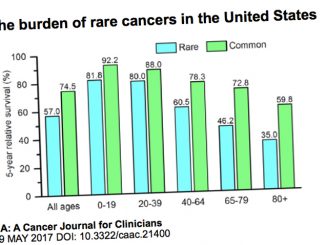Between 2018 and 2040, patients requiring first course chemotherapy will significantly increase annually, accordingly to a modelling study published in The Lancet Oncology.
For the first time researchers estimated the scale of chemotherapy provision at regional, national and global level: Brooke Wilson and colleagues from the University of New South Wales and the Collaboration for Cancer Outcomes, Research and Evaluation at the Ingham Institute for Applied Medial Research, Australia measured the number of cancer cases which required chemotherapy in 2018, and consequently to what extent such cases were likely to increase by 2040. Data for the incidence of 29 types of cancer in 183 countries were obtained from GLOBOCAN 2018 (Global Cancer Incidence Mortality and Prevalence developed by IARC).
In case of a full application of evidence-based guidelines, the number of patients demanding first-line chemotherapy treatment will increase by 53 percent, from 9.8 million in 2018 to 15 million in 2040. In 2040, 67% of such patients (10.1 million) will reside in low or middle-income countries. Global number of cancer cases are expected to rise, particularly in those countries. To respond to this demand, the study estimates the number of physicians needed in 2018 and 2040 to provide chemotherapy to all patients who would benefit from it: an expansion of the chemotherapy workforce is required, from approximately 65,000 cancer physicians in 2018 to 100,000 in 2040, assuming each doctor saw 150 new chemotherapy patients (a safe workload). The question of how many doctors we actually need depends also on context (see also Cancer Services: how much is enough?): because the actual workload of cancer physicians varies significantly worldwide, the estimates ranged from 32,600 to 97,800 physicians in 2018 and 50,000 to 150,000 in 2040.
“The rising cancer burden and the increasing demands for chemotherapy globally will be major health crises during the next 20 years. The gap between available service provision and demand is substantial, especially in low-income and middle-income countries. Strategic investments to expand capacity for chemotherapy delivery globally are urgently needed” Wilson said.
Globally, 57.7% of new cancer cases (9.8 million out of 17 million) required chemotherapy in 2018. In 2040, the number of new cases of cancer will rise to 26 million, of which 53% (15 million)—+5.2 million new cancer cases from 2018—are expected to need chemotherapy. In 2040, the most common cancers needing chemotherapy will be lung (16.4%, 2.5 million), breast (12.7%, 1.9 million) and colorectal cancer (11.1%, 1.7 million), and the greatest absolute increases in new cases will occur for these same three types of cancer (around additional 900k cases of lung cancer, 620k of colorectal and 500k breast cancer requiring chemotherapy annually).
The authors acknowledge that actual chemotherapy use is generally lower than the optimal use based on guidelines for a variety of reasons, and this difference is even greater in low- and middle-income countries, as many patients cannot afford the costs. There are also other barriers, including scarcity of chemotherapy drugs, infrastructure for drug delivery, supportive pathology and radiotherapy services, and trained personnel. Another limitation of this study was that age distribution and health status may change by 2040, but that was not taken into account in the model. The model also assumed that treatment guidelines are constant between 2018 and 2040, as future changes based on scientific advances are unpredictable.





